Top Tips for Evaluating Cloud Call Center Software
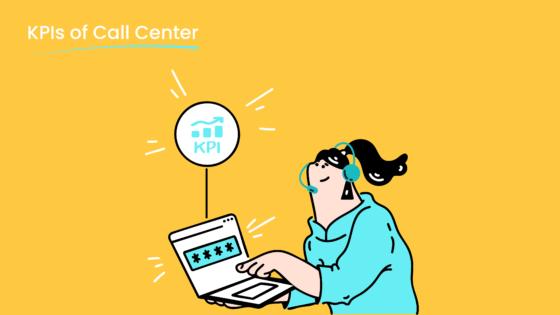
Choosing the right cloud call center software can revolutionize your customer service operations. As businesses increasingly turn to cloud-based solutions, the demand for flexibility, efficiency, and productivity continues to grow. With investments in public cloud services projected to hit $600 billion in 2023 and 66% of call centers expected to adopt cloud platforms by 2024, the importance of conducting a thorough cloud call center software comparison has never been greater.
That said, evaluating software options can present its own set of challenges. Implementation often requires navigating technical complexities, ensuring seamless integration with existing systems, and leveraging IT expertise. Additionally, training employees to effectively utilize advanced features can feel overwhelming. A structured approach is crucial to overcoming these obstacles, enabling you to compare features and pricing with confidence. Providers like Sobot simplify this process by offering secure, scalable, and user-friendly communication platforms tailored to meet your business needs.
Key Features to Evaluate in Cloud Call Center Software
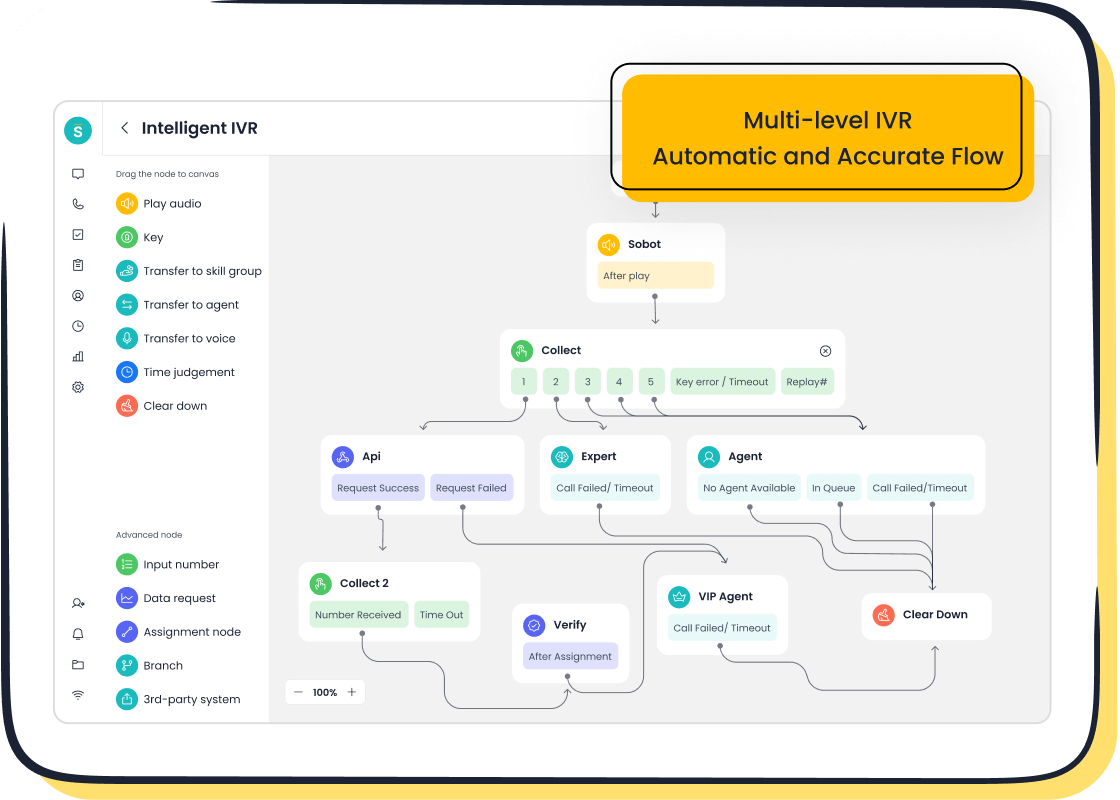
Scalability and Flexibility for Business Growth
Scalability and flexibility are essential for businesses aiming to grow while maintaining operational efficiency. Cloud call center software enables you to adapt quickly to changing demands, whether you're handling seasonal spikes or expanding into new markets. Real-time analytics, cost-effective scaling, and enhanced customer experiences are key metrics that demonstrate the impact of scalability on business growth.
| Metric | Impact on Business Growth |
|---|---|
| Real-time analytics | Enhances operational efficiency and customer satisfaction. |
| Cost-effective scaling | Allows businesses to adjust operations and costs easily. |
| Enhanced customer experience | Contributes to improved customer satisfaction and retention. |
Flexible subscription-based pricing models also help you control budgets effectively. For example, Sobot's Voice Call Center offers global number availability and intelligent IVR systems, allowing businesses to scale operations seamlessly while maintaining high service quality. With features like AI-powered Voicebot and smart call routing, Sobot ensures your call center software adapts to your evolving needs.
Integration with Existing Tools and Systems
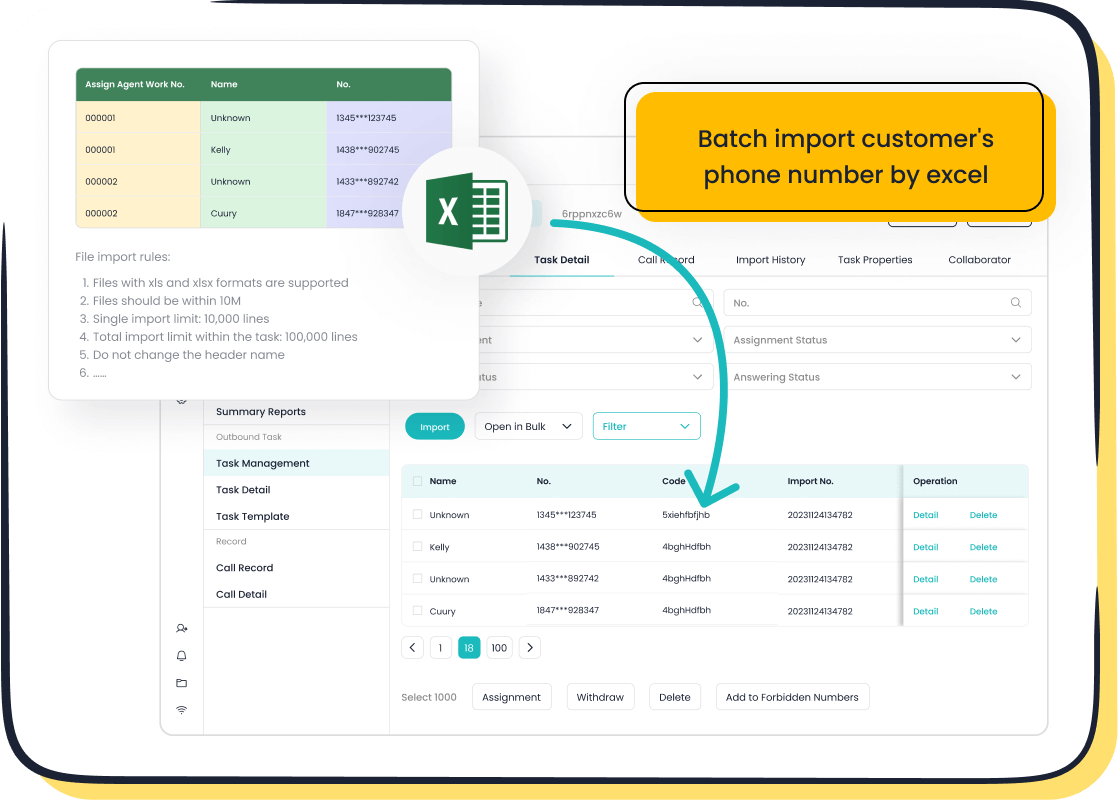
Integration capabilities are vital for ensuring your call center software works harmoniously with your existing tools and systems. A well-integrated platform reduces data silos, improves team collaboration, and enhances customer interactions. For instance, Sobot's Voice Call Center integrates effortlessly with CRM systems like Salesforce, enabling agents to access customer histories and provide personalized service.
Omnichannel communication capabilities further streamline operations by consolidating interactions across platforms like email, social media, and WhatsApp. This unified approach ensures customers receive consistent service, regardless of the channel they choose. Businesses that prioritize integration often see improved agent efficiency and reduced operational costs, as demonstrated by Samsung's success with Sobot's solutions.
Ease of Use and User Experience
Ease of use directly impacts how quickly your team can adopt and benefit from call center software. Platforms with intuitive interfaces and streamlined workflows reduce training time and improve agent productivity. User feedback highlights the importance of usability in popular platforms:
| Platform | User Feedback | Key Features |
|---|---|---|
| Nextiva | Customers praise the 'awesome' onboarding and fast response to setup issues. | Intelligent queuing, AI-powered contact center, out-of-the-box integrations, enhanced analytics. |
| CallHippo | Users say the dashboard is 'incredibly intuitive.' | Fast and responsive support team. |

Sobot's Voice Call Center stands out with its drag-and-drop IVR builder and unified workspace, which simplify call management and customer data access. The platform's mobile compatibility ensures agents can work efficiently from anywhere, further enhancing the user experience. By choosing software that prioritizes ease of use, you empower your team to deliver exceptional service with minimal downtime.
Security and Compliance Standards
When evaluating call center software, security and compliance should be at the top of your checklist. Protecting sensitive customer data is not just a best practice—it’s a legal requirement. Leading cloud call center platforms adhere to strict compliance frameworks to ensure your business meets industry standards and avoids costly penalties.
| Compliance Framework | Description |
|---|---|
| GDPR | Protects personal data of EU citizens, requiring compliance from businesses processing such data. |
| HIPAA | Safeguards personal health information, requiring covered entities to implement security measures. |
| ISO 27002 | Provides information security controls for organizations, focusing on protecting information assets. |
| NIST 800-53 | Offers a catalog of security and privacy controls for organizations to protect against various threats. |
| PCI DSS | Sets standards for securing cardholder data and protecting transaction processes. |
| CSA Cloud Controls Matrix | A modern framework with 197 control objectives for cloud security assurance and compliance. |
| HITRUST | Integrates HIPAA compliance with a risk-based approach to safeguard healthcare information. |
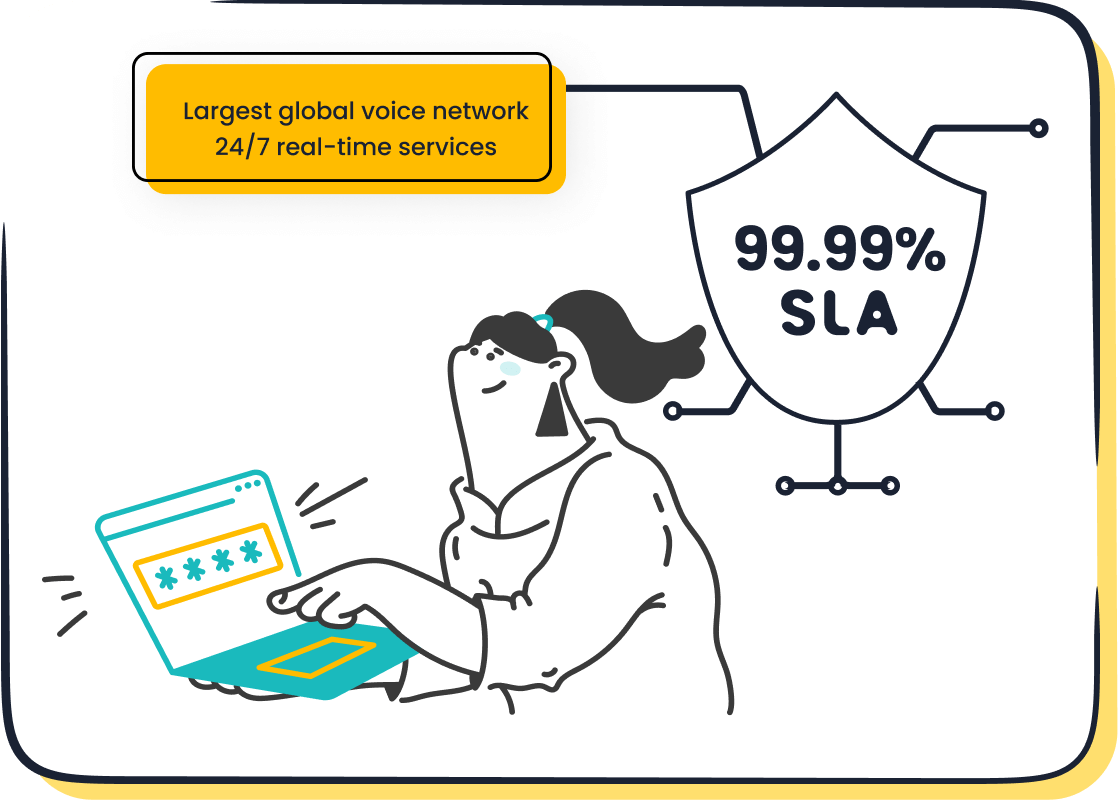
Sobot’s Voice Call Center ensures compliance with these frameworks, offering encrypted data transfer and a 99.99% system uptime. This level of security protects your customer interactions and builds trust. For example, Samsung achieved a 97% customer satisfaction rate while maintaining compliance with global standards using Sobot’s solutions. By prioritizing security, you safeguard your business and enhance customer confidence.
Analytics and Reporting Capabilities
Analytics play a crucial role in optimizing call center operations. Call center software with robust analytics features helps you track performance, identify trends, and make data-driven decisions. Metrics like first-call resolution (FCR) and customer satisfaction scores (CSAT) provide actionable insights into your team’s efficiency and service quality.
| Key Metrics | Benefits |
|---|---|
| First-call resolution (FCR) | Provides a measure of how effectively issues are resolved on the first contact. |
| Customer satisfaction scores (CSAT) | Quantifies customer satisfaction, essential for improving service quality. |
| Average handle time (AHT) | Helps in assessing efficiency and managing call center resources effectively. |
| Data-driven decision-making | Enables informed decisions regarding agent training, scheduling, and customer journey mapping. |
Sobot’s Voice Call Center excels in call center analytics by offering real-time monitoring and detailed reporting. These tools allow you to evaluate agent performance and customer interactions. For instance, businesses using Sobot have reduced average handle time and improved first-call resolution rates. With analytics, you can refine your strategies and deliver exceptional customer experiences.
AI and Automation Features in Sobot Voice/Call Center
Automation is transforming the way call centers operate. AI-powered tools streamline workflows, reduce repetitive tasks, and enhance customer satisfaction. Sobot’s Voice Call Center integrates advanced automation features like AI-powered Voicebot and smart call routing to improve efficiency.
| Metric | Value |
|---|---|
| Reduction in inbound discussion volume | 20% |
| Positive feedback rate | 96%+ |
| Correct answers rate | 80% |
| Customer satisfaction rate | 95% |
| Self-service question resolution | 22.2% |
| CSAT score | 97% |
| Problem resolution rate | 85% |
| Customer happiness rate | 99% |
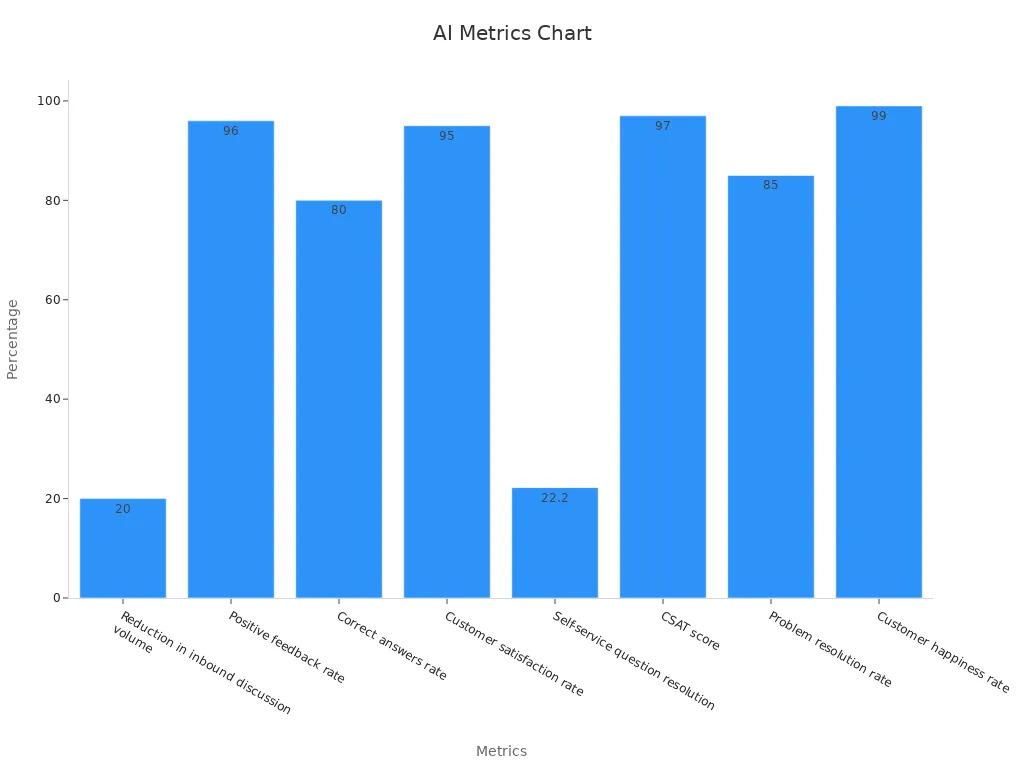
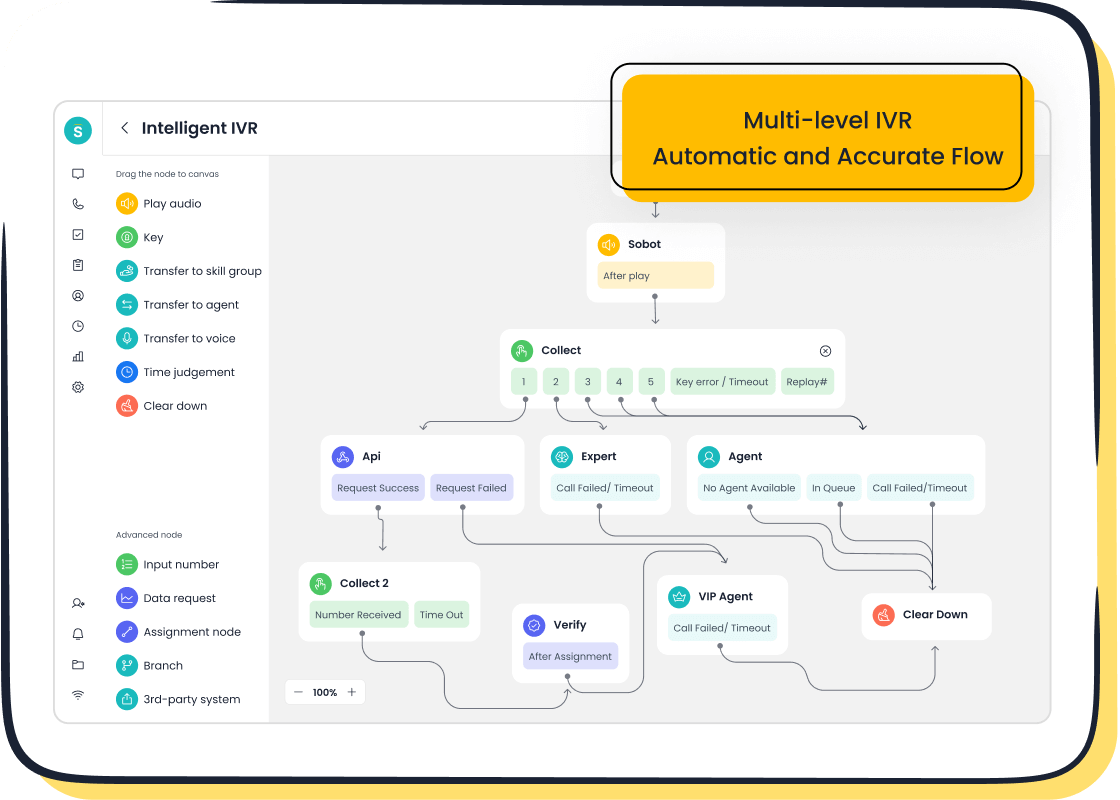
Sobot’s automation capabilities empower your team to focus on complex issues while AI handles routine inquiries. This approach not only reduces inbound discussion volume by 20% but also boosts customer satisfaction to 95%. By leveraging automation, you can enhance productivity and deliver faster resolutions, ensuring a seamless customer experience.
Pricing Considerations for Cloud Call Center Software
Subscription Models and Pricing Tiers
Subscription models and pricing tiers play a crucial role in determining the affordability and scalability of call center software. You need to evaluate whether the pricing structure aligns with your business needs and growth plans. Providers typically offer various models, including pay-per-use, tiered pricing, and subscription-based plans.
| Pricing Analysis | Description |
|---|---|
| Subscription-Based Models | Recurring payments for continuous access to services. |
| Pay-Per-Use Model | Charges based on actual usage, ideal for businesses with fluctuating needs. |
| Tiered Pricing Model | Different levels of service based on usage tiers. |
| Perpetual License Model | One-time payment for long-term use. |
| Hybrid Model | Combines multiple pricing strategies for flexibility. |
| Customized Pricing Model | Tailored plans based on specific business requirements. |
For example, Nextiva offers pricing tiers ranging from $20 to $32 per month, while CloudTalk’s plans start at $25 per user per month. Sobot’s Voice Call Center adopts an economic SaaS rental model, providing businesses with cost-effective access to advanced features like AI-powered Voicebot and global number availability. By understanding these models, you can choose a plan that balances cost and functionality.
Hidden Costs and Transparent Pricing
Hidden costs can significantly impact your budget if overlooked during the evaluation process. Transparent pricing ensures you avoid unexpected expenses and maintain financial control. Common hidden costs include fees for support, maintenance, and system administration.
Tip: Always ask vendors for a detailed breakdown of costs to avoid surprises.
Here are some hidden costs to watch for:
- Indirect payments for support and maintenance.
- Increased expenses for staff training.
- Downtime-related financial losses.
- Creeping operational costs due to unpredictable maintenance fees.
- Delayed updates and security patches creating vulnerabilities.
Sobot’s Voice Call Center prioritizes transparent pricing, offering clear subscription plans without hidden fees. Its 99.99% system uptime minimizes downtime-related losses, ensuring consistent service delivery. By choosing software with transparent pricing, you protect your budget and avoid disruptions to your operations.
Free Trials, Demos, and ROI Analysis
Free trials and demos provide valuable insights into the usability and features of call center software. They allow you to test the platform in real-world scenarios before committing to a purchase. ROI analysis further helps you measure the financial benefits of your investment.
Benefits of free trials and ROI analysis include:
- Payback within six months and a 410% return over three years, as seen in Boomi’s case study.
- $3.2 million in business acceleration and incremental revenue.
- $2.8 million in productivity gains from improved data analysis.
- $2.3 million saved on legacy software and hardware.
Sobot offers free trials and demos for its Voice Call Center, enabling you to explore features like intelligent IVR and smart call routing. These tools help businesses reduce average handle time and improve customer satisfaction. By leveraging trials and ROI analysis, you can make informed decisions and maximize the value of your investment.
Long-Term Value and Cost Efficiency
Investing in cloud call center software offers significant long-term value and cost efficiency for businesses. While the initial investment may seem substantial, the benefits far outweigh the costs over time. By adopting a cloud-based solution, you can reduce operational expenses, improve resource allocation, and enhance overall call center performance.
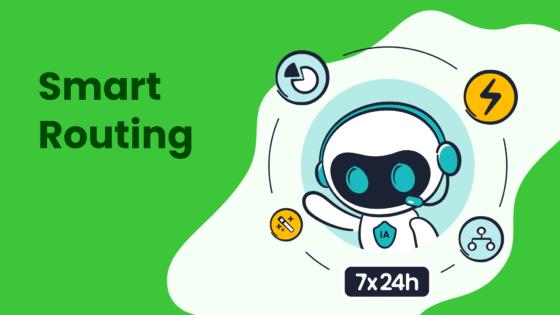
One of the key advantages of cloud call center software is its ability to lower costs associated with infrastructure and maintenance. Traditional on-premise systems often require expensive hardware, regular upgrades, and dedicated IT teams. In contrast, cloud solutions eliminate these expenses by offering a subscription-based model. For example, Sobot’s Voice Call Center operates on an economic SaaS rental model, providing access to advanced features like AI-powered Voicebot and global number availability without the need for costly infrastructure.
To better understand the cost efficiency of cloud call center software, consider the following metrics:
| Metric | Description |
|---|---|
| Cost per Unit of Information Transmitted | Measures the cost for transmitting a specific unit of information, indicating data transmission efficiency. |
| Cost per User | Assesses the cost incurred per user in a communication system, reflecting resource allocation efficiency. |
| Return on Investment (ROI) | Compares benefits gained from communication activities to costs incurred, providing a comprehensive view of cost efficiency. |
These metrics highlight how cloud call center software optimizes spending while delivering measurable results. For instance, businesses using Sobot’s solutions have reported improved ROI through reduced average handle times and increased first-call resolution rates. These improvements not only enhance customer satisfaction but also contribute to long-term financial savings.
Another factor contributing to cost efficiency is scalability. Cloud call center software allows you to scale operations up or down based on demand. This flexibility ensures you only pay for what you use, making it ideal for businesses experiencing seasonal fluctuations or rapid growth. Sobot’s platform, with its 99.99% system uptime and global network support, ensures uninterrupted service even during peak periods.
Additionally, automation features in cloud call center software play a crucial role in reducing costs. AI-powered tools, such as Sobot’s Voicebot, handle routine inquiries, freeing up agents to focus on complex issues. This approach not only improves efficiency but also reduces the need for additional staffing, further lowering operational expenses.
By investing in cloud call center software, you position your business for long-term success. The combination of cost savings, improved performance, and scalability ensures you can adapt to changing market demands while maintaining high service quality. Sobot’s solutions exemplify these benefits, offering a stable and powerful platform that drives both efficiency and customer satisfaction.
Tips for Effective Cloud Call Center Software Comparison
Testing Usability with Real-World Scenarios
Testing usability in real-world scenarios ensures the call center software meets your operational needs. Simulate common customer interactions to evaluate how the software handles tasks like call routing, IVR navigation, and agent workflows. For example, assess whether the platform reduces average handle time or improves first-call resolution rates.
Data-driven quality management plays a critical role here. By analyzing metrics such as call handling time and customer satisfaction scores, you can identify patterns and make evidence-based decisions. Tools like real-time monitoring and custom reporting provide insights into agent performance and customer interactions. Sobot’s Voice Call Center excels in this area, offering analytics tools and real-time monitoring to help you optimize operations.
| Feature/Metric | Description |
|---|---|
| Analytics Tools | Essential for evaluating software solutions effectively. |
| Call Routing | Streamlines call handling and reduces customer wait times. |
| Interactive Voice Response (IVR) | Enhances customer experience by providing automated responses. |
| Data-Driven Performance Analysis | Enables targeted training and development based on objective insights into agent performance. |
Testing usability ensures the software aligns with your business goals and delivers measurable results.
Evaluating Vendor Credibility and Support
Vendor credibility directly impacts the success of your customer service software. A reliable vendor provides dependable software and excellent support. Look for reviews and testimonials from current users to gauge customer satisfaction. Case studies also offer valuable insights into the vendor’s ability to meet business needs.
For instance, Samsung achieved a 97% customer satisfaction rate by implementing Sobot’s all-in-one contact center solution. This success highlights the importance of choosing a vendor with a proven track record. Evaluate the vendor’s history, reputation, and customer feedback to ensure they can deliver high-quality services.
| Evidence Type | Description |
|---|---|
| Vendor Performance Records | Information on the vendor's history, reputation, and customer feedback based on past performance. |
| Customer Feedback | Insights from testimonials and reviews that indicate customer satisfaction and vendor reliability. |
| Case Studies | Detailed examples of the vendor's ability to deliver high-quality services and meet customer needs. |
A vendor like Sobot, known for its innovation and customer-centric approach, ensures you receive robust software and ongoing support.
Ensuring Compliance with Industry Standards
Compliance with industry standards protects your business and builds customer trust. Regulations like GDPR and CCPA safeguard customer data, ensuring privacy and security. Adhering to these standards prevents unauthorized access and misuse of sensitive information.
Sobot’s Voice Call Center prioritizes compliance by implementing encrypted data transfer and maintaining a 99.99% system uptime. Regular training programs and monitoring systems further enhance compliance. By choosing software that meets regulatory requirements, you protect your customers and uphold your reputation as a trustworthy service provider.
Tip: Establish feedback mechanisms to identify and address compliance-related issues proactively.
Investing in compliant call center software ensures your operations align with legal and ethical standards, fostering long-term customer loyalty.
Gathering Feedback from End Users
Gathering feedback from end users is a critical step in evaluating cloud call center software. It provides valuable insights into how the software performs in real-world scenarios and highlights areas for improvement. By involving your team and customers in the evaluation process, you can ensure the software aligns with their needs and expectations.
Start by collecting feedback from agents who will use the software daily. Their input can reveal whether the platform simplifies workflows, reduces average handle time, or improves customer interactions. For example, Sobot’s Voice Call Center offers a unified workspace that agents find intuitive, making it easier to manage calls and access customer data. Testing the software during a trial period allows you to gather this feedback effectively.
Customer feedback is equally important. Metrics like Customer Satisfaction Score (CSAT) and Net Promoter Score (NPS) help you measure how well the software supports customer needs. A free trial provides an excellent opportunity to collect these metrics and assess the software’s impact on customer satisfaction. Here’s a breakdown of key feedback metrics to consider:
| Metric | Description |
|---|---|
| Customer Satisfaction Score | Measures customer satisfaction on a scale from 1 to 5, indicating overall contentment with the product. |
| Net Promoter Score | Assesses customer loyalty and likelihood to recommend, using a scale from 0 to 10. |
| Customer Effort Score | Evaluates how easily customers can achieve their goals with the product, often on a scale of agreement. |
| Retention Rate | Indicates the percentage of customers who continue using the product over time. |
| Qualitative Feedback | Provides context to quantitative metrics, offering deeper insights into user experiences. |
During your cloud call center software comparison, use these metrics to identify strengths and weaknesses. For instance, Sobot’s solutions have helped businesses achieve high CSAT scores by reducing customer effort through features like AI-powered Voicebot and smart call routing. These tools streamline interactions, ensuring customers receive quick and accurate responses.
Encourage open communication with your team and customers throughout the evaluation process. Use surveys, interviews, and focus groups to gather qualitative feedback. This approach uncovers specific pain points and improvement opportunities that numbers alone cannot reveal. By prioritizing end-user feedback, you can make informed decisions and select software that delivers long-term value.
Common Mistakes to Avoid When Choosing Call Center Software
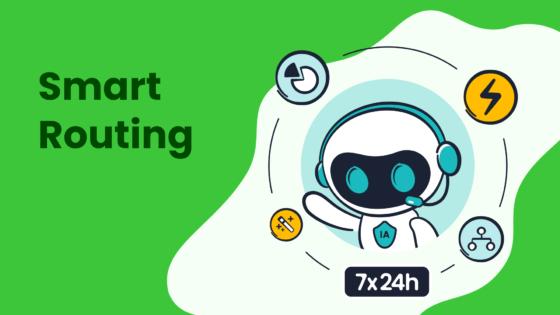
Overlooking Scalability for Future Growth
Failing to consider scalability can hinder your business's ability to adapt to future demands. The virtual call center market is growing rapidly, driven by the need for flexible technologies that support remote operations and enhanced customer experiences. Choosing software that cannot scale with your business may result in costly upgrades or replacements later.
| Aspect | Evidence |
|---|---|
| Future Growth | The virtual call center market is expanding due to the demand for flexible, scalable solutions. |
| Cost Efficiency | Cloud-based platforms reduce upfront costs and allow for efficient resource allocation. |
| Enhanced Service Delivery | AI integration improves agent performance and customer satisfaction, requiring scalable systems. |

Sobot’s Voice Call Center offers a scalable solution with features like global number availability and AI-powered Voicebot. These tools ensure your software grows alongside your business, supporting evolving customer needs and operational demands. By prioritizing scalability, you future-proof your investment and maintain service excellence.
Ignoring User Feedback During Evaluation
Ignoring feedback from end users—both agents and customers—can lead to poor software adoption and reduced satisfaction. Agents rely on intuitive interfaces to manage calls efficiently, while customers expect seamless interactions. Neglecting their input during the evaluation process risks selecting software that fails to meet practical needs.
For example, Sobot’s Voice Call Center provides a unified workspace that simplifies workflows and enhances usability. Businesses using Sobot have reported improved agent productivity and higher customer satisfaction scores. Collecting feedback through surveys or trial periods ensures the software aligns with user expectations, reducing the risk of implementation challenges.
Focusing Solely on Price Over Features
Choosing software based solely on price often results in hidden costs and missed opportunities for long-term value. Low-cost options may lack essential features, leading to inefficiencies and lower ROI.
- Overlooking critical features can reduce customer satisfaction and operational efficiency.
- Hidden fees, such as setup or maintenance costs, can inflate the total cost of ownership.
- ROI depends on factors like productivity, customer satisfaction, and reduced handling times—not just the initial price.
Sobot’s economic SaaS rental model balances affordability with advanced features like intelligent IVR and real-time analytics. This approach ensures you gain both cost efficiency and functionality. By evaluating features alongside pricing, you maximize ROI and avoid costly mistakes.
Neglecting Vendor Support and Training
Vendor support and training play a critical role in the success of your cloud call center software. Ignoring these aspects can lead to operational inefficiencies, frustrated agents, and dissatisfied customers. When evaluating software, you must consider the level of support and training the vendor provides.
Effective vendor support minimizes downtime, which is essential for maintaining customer relationships and revenue. Imagine a scenario where your system experiences a technical issue during peak hours. Without prompt vendor assistance, your team may struggle to resolve the problem, leading to delayed responses and unhappy customers. Companies with strong vendor support often report improved operational efficiency and fewer errors.
Ongoing training is equally important. It equips your agents with the skills they need to use the software effectively, reducing technical disruptions. For example, organizations that invest in regular training sessions see fewer mistakes and higher user satisfaction. This approach allows agents to focus on delivering exceptional service rather than troubleshooting software issues.
Robust vendor relationships also contribute to long-term cost savings. By addressing recurring issues proactively, vendors help you avoid unnecessary expenses. Businesses that prioritize vendor support and training often achieve higher customer satisfaction rates due to consistent, high-quality interactions.

Sobot exemplifies the importance of vendor support and training. Its Voice Call Center solution includes comprehensive onboarding, technical assistance, and ongoing training programs. These services ensure your team can leverage features like intelligent IVR and AI-powered Voicebot to their full potential. With Sobot’s 99.99% system uptime and global network support, you can trust that your operations will run smoothly.
By prioritizing vendor support and training, you set your business up for success. This focus not only enhances agent productivity but also ensures your customers receive the best possible experience.
Making the Final Decision with Sobot Voice/Call Center
Comparing Shortlisted Options
When comparing shortlisted call center solutions, you need a structured framework to evaluate each option effectively. A competitive analysis helps you weigh critical factors like functionality, usability, and value for money. The table below outlines a comparison framework to guide your decision-making process:
| Criteria | Weight (%) | Description |
|---|---|---|
| Core Functionality | 25 | Essential features like call management and reporting. |
| Additional Standout Features | 25 | Unique features such as AI insights and advanced routing. |
| Usability | 10 | User interface and navigation ease. |
| Onboarding | 10 | Training resources and support during initial setup. |
| Customer Support | 10 | Availability and quality of support services. |
| Value For Money | 10 | Pricing structure and overall affordability. |
| Customer Reviews | 10 | Insights from user feedback and satisfaction ratings. |
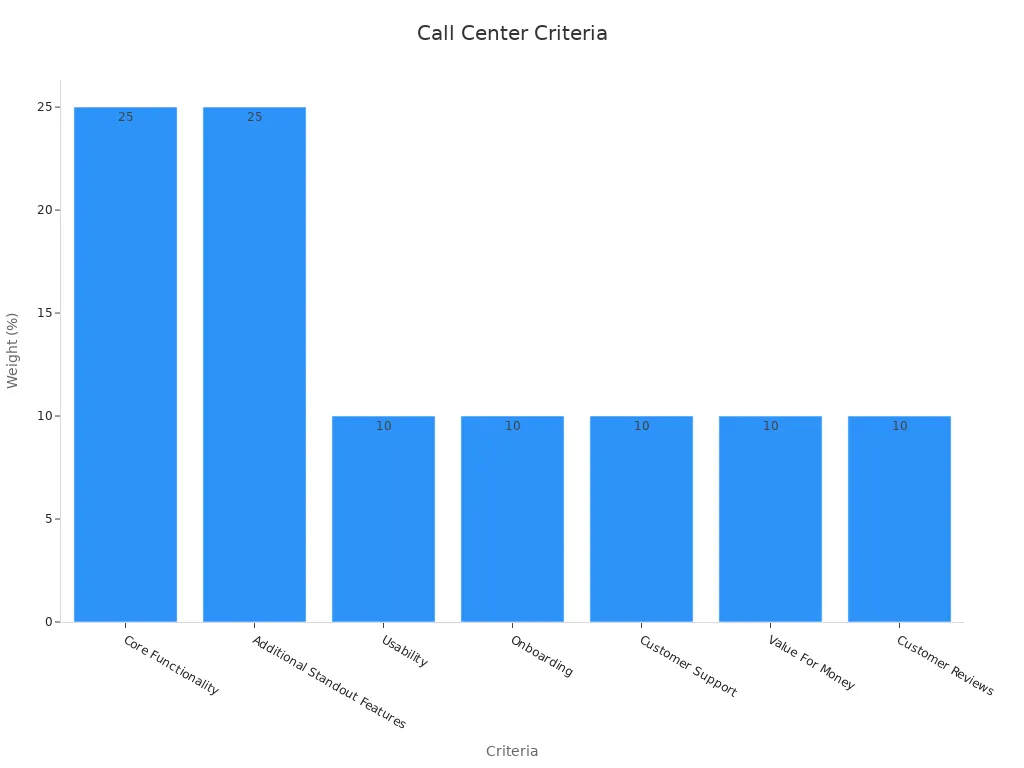
Sobot’s Voice Call Center excels in core functionality and standout features. With tools like AI-powered Voicebot, intelligent IVR, and real-time analytics, it ensures seamless operations and enhances the customer experience. By using this framework, you can identify the software that best meets your needs.
Aligning Software with Business Goals
Aligning your call center software with business goals ensures long-term success. Research shows that companies with written business plans grow 30% faster. Start by identifying your objectives, such as improving customer satisfaction or reducing operational costs. Then, evaluate how the software supports these goals.
For example, Sobot’s Voice Call Center offers features like smart call routing and global number availability, which help businesses enhance the customer experience while scaling operations efficiently. Tools like real-time analytics also enable you to track progress and make data-driven decisions. Only 59% of organizations actively review their progress against strategic priorities. By leveraging Sobot’s analytics, you can monitor performance and align your operations with your goals.
Collaborating with Stakeholders for Buy-In
Securing stakeholder buy-in is crucial for successful software implementation. Engage key decision-makers early in the process to address concerns and build consensus. Share data on how the software improves metrics like first-call resolution and customer satisfaction.
Involve your team in testing the software during free trials. Their feedback ensures the platform meets operational needs and enhances ease of implementation. Sobot’s Voice Call Center simplifies onboarding with intuitive tools like a drag-and-drop IVR builder, reducing training time and boosting adoption rates. Highlighting these benefits helps you gain support from stakeholders and ensures a smooth transition.
Evaluating cloud call center software requires a balanced focus on features and pricing. Features like IVR systems can automate routine tasks, saving costs and improving customer satisfaction. Speech analysis tools provide insights into customer dissatisfaction, helping you make informed decisions. These capabilities highlight the importance of thorough feature evaluation.
Tip: Request demos and free trials to test usability and gather team feedback. Metrics like Customer Satisfaction Score and First Call Resolution offer valuable insights into software performance.
| Metric | Benefit |
|---|---|
| Customer Satisfaction Score | Reveals areas for improving customer service. |
| First Call Resolution | Measures efficiency in resolving issues on the first contact. |
| Average Handle Time | Identifies inefficiencies for process optimization. |
Sobot’s Voice Call Center offers advanced features like intelligent IVR and real-time analytics, ensuring long-term value. Take the next step by consulting your team and prioritizing software that aligns with your goals.
FAQ
What is cloud call center software?
Cloud call center software is a platform hosted on the internet that manages customer interactions. It eliminates the need for physical infrastructure, offering features like call routing, analytics, and AI tools. Sobot’s Voice Call Center provides a scalable, secure, and user-friendly solution for businesses of all sizes.
How does cloud call center software improve customer service?
It enhances customer service by automating tasks, reducing wait times, and providing real-time analytics. For example, Sobot’s AI-powered Voicebot resolves routine inquiries, allowing agents to focus on complex issues. This improves first-call resolution rates and customer satisfaction scores.
Is cloud call center software secure?
Yes, most platforms prioritize security with encrypted data transfer and compliance with standards like GDPR and PCI DSS. Sobot’s Voice Call Center ensures 99.99% uptime and encrypted communication, protecting sensitive customer data and maintaining trust.
Can cloud call center software integrate with existing systems?
Yes, integration is a key feature. Sobot’s Voice Call Center seamlessly connects with CRM systems like Salesforce, enabling agents to access customer histories and provide personalized service. This integration improves efficiency and reduces data silos.
What industries benefit most from cloud call center software?
Industries like retail, financial services, and gaming benefit significantly. For instance, Samsung improved agent efficiency by 30% using Sobot’s solutions. The software adapts to various industries, enhancing customer interactions and operational efficiency.
See Also
Comprehensive Overview of Omnichannel Call Center Tools
Essential Insights on Quality Assurance for Call Centers
Key Attributes of CRM Solutions for Call Centers
